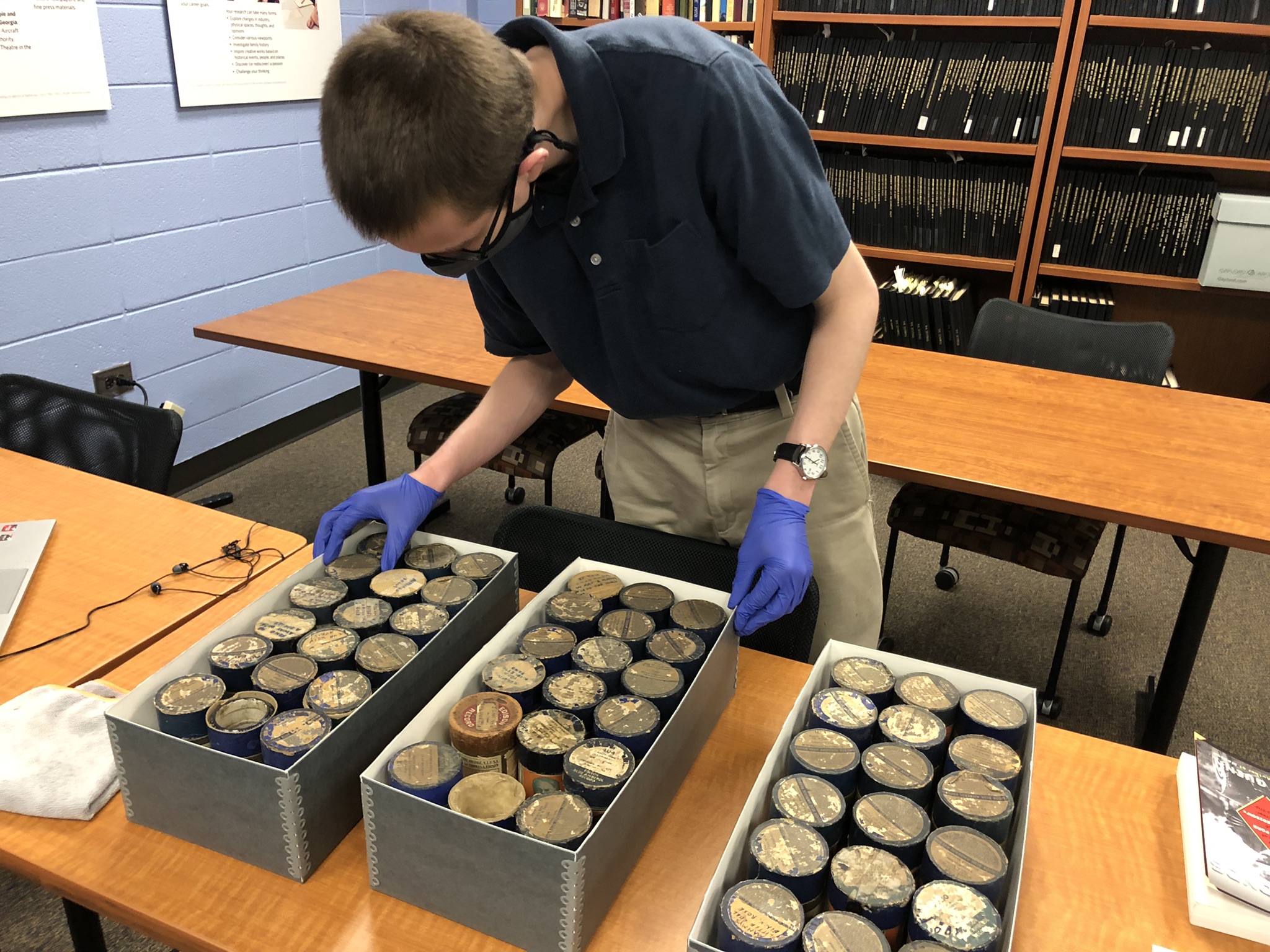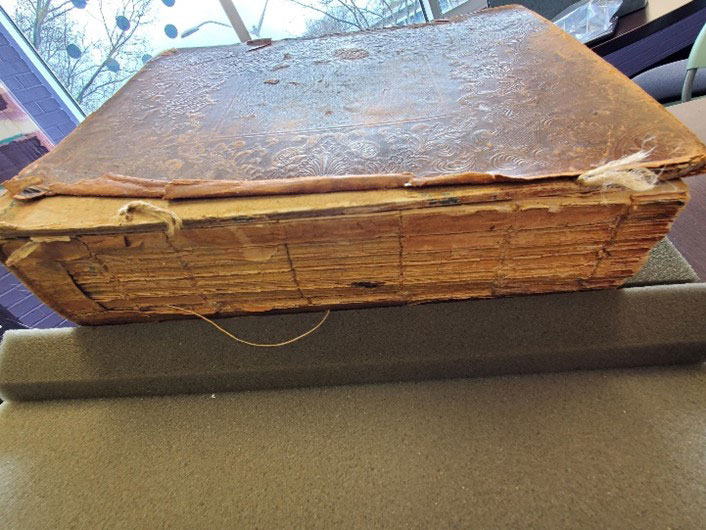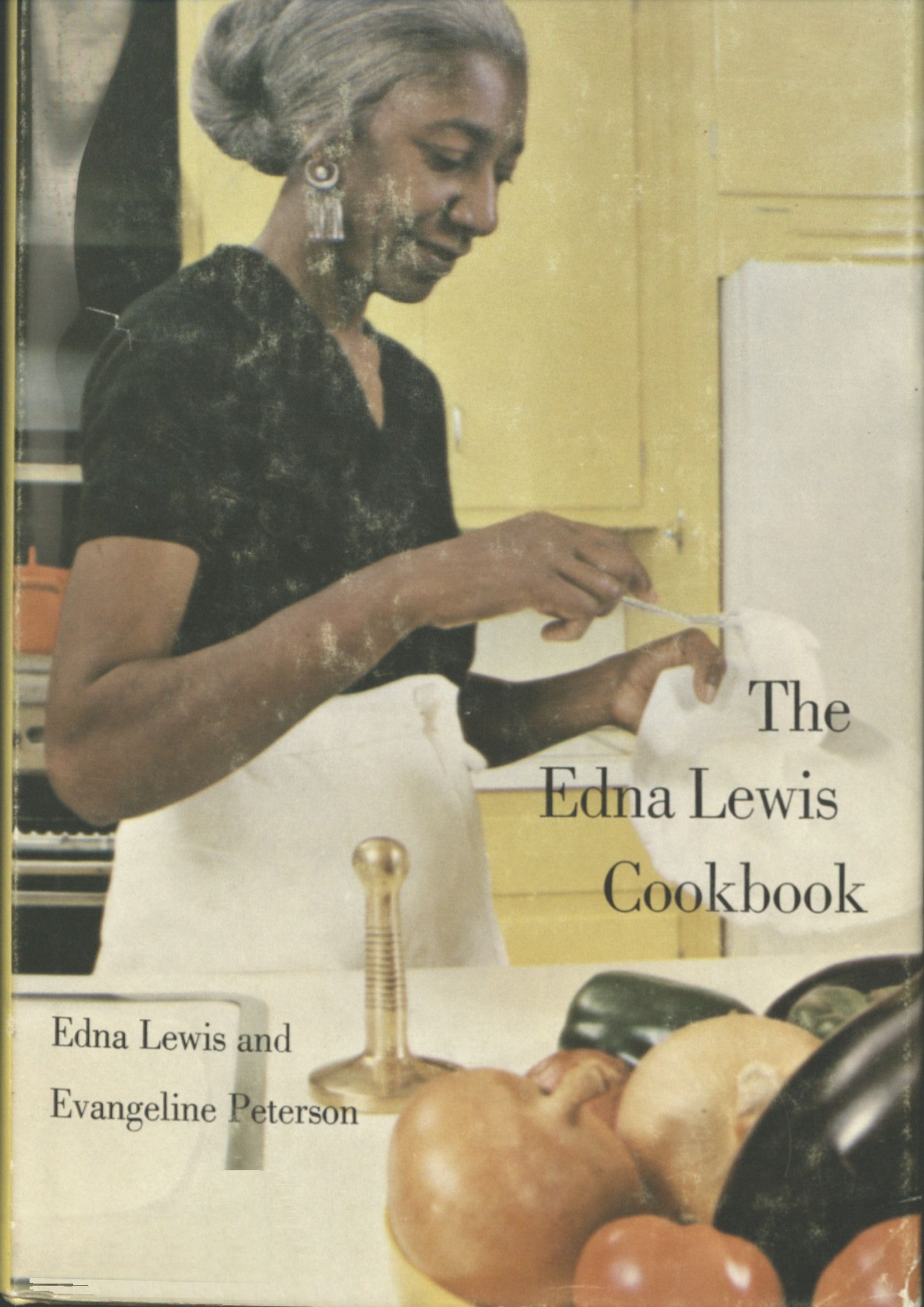
Cooking with Rare Books: Thanksgiving Recipes from the WWI Home Front
KENNESAW, Ga. | May 19, 2023
KSU Honors Student Camilla Stegall discusses how food rationing and substitutions made for creative holiday dishes in WWI America.
Welcome back to the Cookery Corner! In this post, we’ll dive into some holiday recipes from Foods That Will Win the War and How to Cook Them!
Before we begin the recipe, it is interesting to reflect on history and the current modern-day situation. When this book was published in 1918, the government was encouraging Americans to decrease their intake of certain foods, especially wheat, meat, sugar, and fat. The year 1918 also saw the beginnings of the Spanish flu pandemic that caused turmoil throughout the world. Now in 2021, we have experienced the devastation of a global pandemic, and while we are not facing government-encouraged rationing and substitution, we are dealing with fluxes in our supply chains. Although this cookbook was written over 100 years ago, perhaps its recipes will be of benefit to us today as we, perhaps, adapt our approaches to our favorite holiday dishes. Because of this, the recipes that I have chosen will hopefully sound familiar and have historically graced your holiday tables.
A part of many people’s Thanksgiving spreads is macaroni and cheese. “Macaroni with Cheese” is in the chapter “SAVE MEAT” in a special section dedicated to recipes using cheese as a meat substitute. Cheese has been an acknowledged source of protein when meat was not available since at least the 16th century. Learn more about Elizabethan-era cooking by reading our blog post about The English Housewife. Here is the World War I era recipe for:
Macaroni with Cheese
Over 1 cup macaroni, boiled in salted water, pour this sauce:
2 tablespoons flour
2 tablespoons fat
1 cupful milk
½ teaspoon salt
1/8 teaspoon pepper
½ cup grated American cheese
Melt fat, add dry ingredients. Add liquid slowly. Bring to boiling point. Add cheese. Stir until melted. Pour over macaroni.
The chapter “SAVE WHEAT” is dedicated to reducing and/or substituting for wheat flour in homemade breads. A couple selections feel timely for the holidays. I’m quite fond of Jiffy cornbread, but as you might know, it requires eggs. If you’re running low on eggs, here’s a corn bread recipe that will save you a couple eggs:
Eggless Corn Bread
1 cup cornmeal
½ cup bread flour
3 tablespoons molasses
1 cup milk
3 teaspoons baking powder
2 teaspoons salt
2 tablespoons fat
Beat thoroughly. Bake in greased muffin pans 20 minutes.
If you ran out of rolls on turkey day but seem to have plenty of leftover mashed potatoes on Black Friday, this recipe will help you take care of those mashed spuds:
Potato Bread
1 ½ cups tightly packed mashed potato
2 ½ cups wheat flour
1 tablespoon warm water
½ yeast cake
½ teaspoon salt
Make dough as usual. Let rise in warm place for 15 minutes. Mould [sic] into loaf, put in pan, let rise until double in bulk in warm place. Bake for 45 minutes in hot oven.
Yet another tenet of Foods That Will Win the War is preventing food waste in the aptly titled chapter, “SAVE FOOD.” One way they suggest making leftovers tastier is to cover them in sauces in “Sauces Make Leftovers Attractive.” They even have a recipe for that oh-so iconic sauce of Thanksgiving:
Cranberry Sauce with Raisins
1 cup cranberries
1 cup water
1 cup corn syrup
½ cup raisins or nuts
2 tablespoons fat
Cook cranberries in water until they are soft and the water is almost entirely absorbed. Add other ingredients and cook about 20 minutes slowly until thick enough to use as sauce.
Now let’s move on to the best part of any holiday meal, the dessert table. Foods That Will Win the War emphasizes sugarless dessert recipes in “SAVE SUGAR.” Corn syrup and molasses were the top two substitutes of choice in Foods That Will Win the War. This first dessert checks off a number of rationing and substituting goals:
Wheatless, Eggless, Butterless, Milkless, Sugarless Cake
1 cup corn syrup
2 cups water
2 cups raisins
2 tablespoons fat
1 teaspoon salt
2 teaspoons cinnamon
1 teaspoon nutmeg
1 ½ cups fine cornmeal, 2 cups rye flour; or, 3 ½ cups whole wheat flour
1 ½ teaspoons baking powder, or, ½ teaspoon soda
Cook corn syrup, water, raisins, fat, salt and spices slowly 15 minutes. When cool, add flour, soda or baking powder, thoroughly blended. Bake in slow oven 1 hour. The longer this cake is kept, the better the texture and flavor. This recipe is sufficient to fill one medium-sized bread pan.
Now we’ll end our World War I substitution Thanksgiving Menu with an interesting meringue-y take on the Thanksgiving classic, pumpkin pie!
Pumpkin Filling for Pie
2 cups stewed pumpkin
1 cup corn syrup
1 egg
2 tablespoons flour
1 teaspoon cinnamon
¾ teaspoon nutmeg
¼ teaspoon allspice
1/8 teaspoon ginger
1 teaspoon vanilla
1/8 teaspoon salt
1 ½ cups milk
Mix all ingredients and bake in double crust pastry, or cook and serve in cooked single crust with meringue.
Meringue for Chocolate, Lemon or Pumpkin Pie
2 egg whites
2 tablespoons corn syrup
Beat whites until very stiff. Add corn syrup by folding in. Do not beat.
Hope you enjoyed this World War I-era Thanksgiving menu from Foods That Will Win The War and How to Cook Them! Thank you for reading and maybe one of these historical recipes will grace your table this holiday!
Happy Thanksgiving from the Bentley Rare Book Museum!
If you didn’t get enough holiday recipes, follow along with Denise Jordan as she recreates “Buttermilk or Sour Milk Cornmeal Muffins” from Foods That Will Win the War on her YouTube Channel: https://www.youtube.com/watch?v=-Vs7lEqrDx4
















